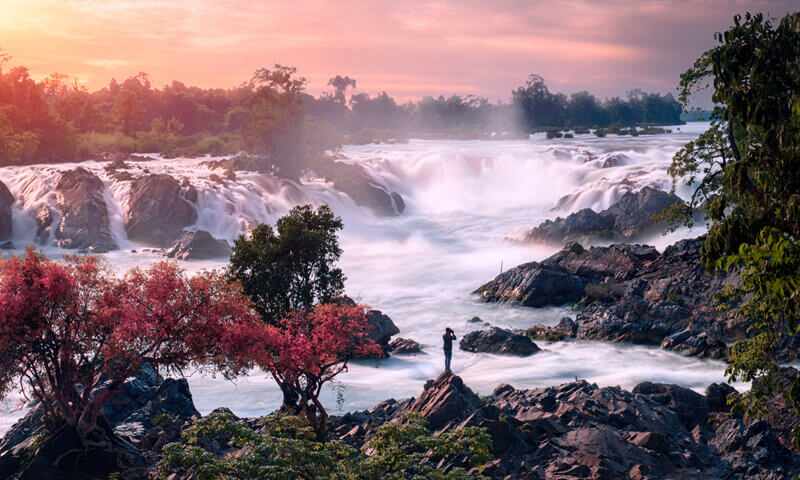
Competitions
In high school you should start making exhibition prints or slides for camera club exhibits and entering competitions such as the annual competition sponsored by the National Scholastic Press Association. This competition is excellent for rating your ability compared with other high school photographers throughout the country. If you are unable to get information on this contest through your school, write to:
- National Scholastic Press Association 2221 University Avenue SE Minneapolis, MN 55414
- Other competitions are sponsored by 4 H Clubs of America and Boy and Girl Scouts of America.
- Besides the cash and scholarships you get from photo contests, the recognition, publicity, and satisfaction of winning top awards for your creative ability is something that you could never place a monetary value on.
- Boy Scouts of America 1325 Walnut Hill Lane P.O. Box 152079 Irving, TX 75015
- Girl Scouts of the USA 420 Fifth Avenue New York, NY 10018
- National Council of the YMCAs of the USA 101 North Wacker Drive Chicago, IL 60606
- YWCAoftheUSA726 Broadway New York, NY 10003
Photo Marketing Association International (PMAI) and its off shoot groups Professional School Photographers Association of America, Society of Photo Finishing Engineers, and Society of Photographic Counselors all have this common address:
- PMAI
- 3000 Picture Place Jackson, MI 49201
- Advertising Photographers of New York 27 Twentieth Street New York, NY 10011
- American Society of Media Photographers (ASMP) 14 Washington Road, Suite 502 Princeton Junction, NJ 08550 1033
- Canadian Association of Photographers and Illustrators in Communications (CAPIC), 100 Broadway Avenue, Suite 322, Toronto, ON M4M 2E8
- Canada International Mini Lab Association (IMA), 2627 Grimsley Street, Greensboro, NC 27403
- National Press Photographers Association, Inc. (NPPA) 3200 Croasdaile Drive, Suite 306 Durham, NC 27705
- Professional Photographers of America (PPof A) 57 Forsyth Street Adanta, GA 30303
- Professional Photographers of Ontario 2833 Donelly Drive, RR #4 Kemptville, ON K0G 1J0 Canada
Strategies For Obtaining Employment
Once you have had the experience of working for a camera shop, professional photographer, or in a company photographic department, you have made the first step toward obtaining future employment. It is through these valuable contacts that you learn of other photographers and photographic establishments. Always take advantage of new contacts in the photographic world. Talk with all the photographers you can and ask questions about things you do not understand. Let it be known at your camera club and photographic meetings that you are interested in a job where you can get more photographic experience. In most cases, you stand a better chance of getting the kind of job you want if you know a specific person to contact, rather than simply placing an application through a personnel office. Sometimes, however, the latter is the only way you have to make a contact in distant locations and with large company photographic departments.
Unless you have been fortunate enough to have had the time and facilities in high school or college to make a good assortment of enlargements of diversified subject matter to show a prospective employer, you will have to rely on making a good impression in your interviews. Much will depend on your appearance, speech, eagerness to get the job, and references from former employers and school professors. Here, too, prizes, awards, and recognition gained through photography contests will be most helpful to you. If nothing else, having won awards shows an extra interest in photography. This will be impressive to anyone looking for someone with real interest in advancing in photography.
Your portfolio of photographs should be uniform in size 8 x 10, 11x14, or 16 x 20 inches and clean and varied in subject matter. A professional folder from some art or office supply store that you use to carry your photographs mounted on mount boards will be professional in appearance. Be sure your prints are spotted carefully. Do not have ragged or crooked borders on your sample prints. Trim the borders off if you must use prints in this condition. In addition, do not put large lettering and your name on the front of your prints.
For appointments with commercial studios and company photographic departments, you should have some views showing products, buildings, equipment, furniture, fashions, automobiles, and groups of people and things. Your work should include close up, medium range, and long distance views. Transparencies should be mounted in transparent vinyl pocketed sheets for viewing over a light table. If arrangements can be made ahead of time, you may decide to put your 35mm transparencies in a carousel type projector tray. Whatever you do, select very few examples of your work. Don't overwhelm your interviewer with a large number of photographs. Pictures of your little brother and sister are not impressive.
Don't depend on the judgment of your own family and friends for selecting the photographs to use and show to get a job. Take your portfolio of photographs and slides to some highly respected professional photographer and ask him or her for help and advice. Most recognized photographers will find time to help a young, eager photographer get started.
